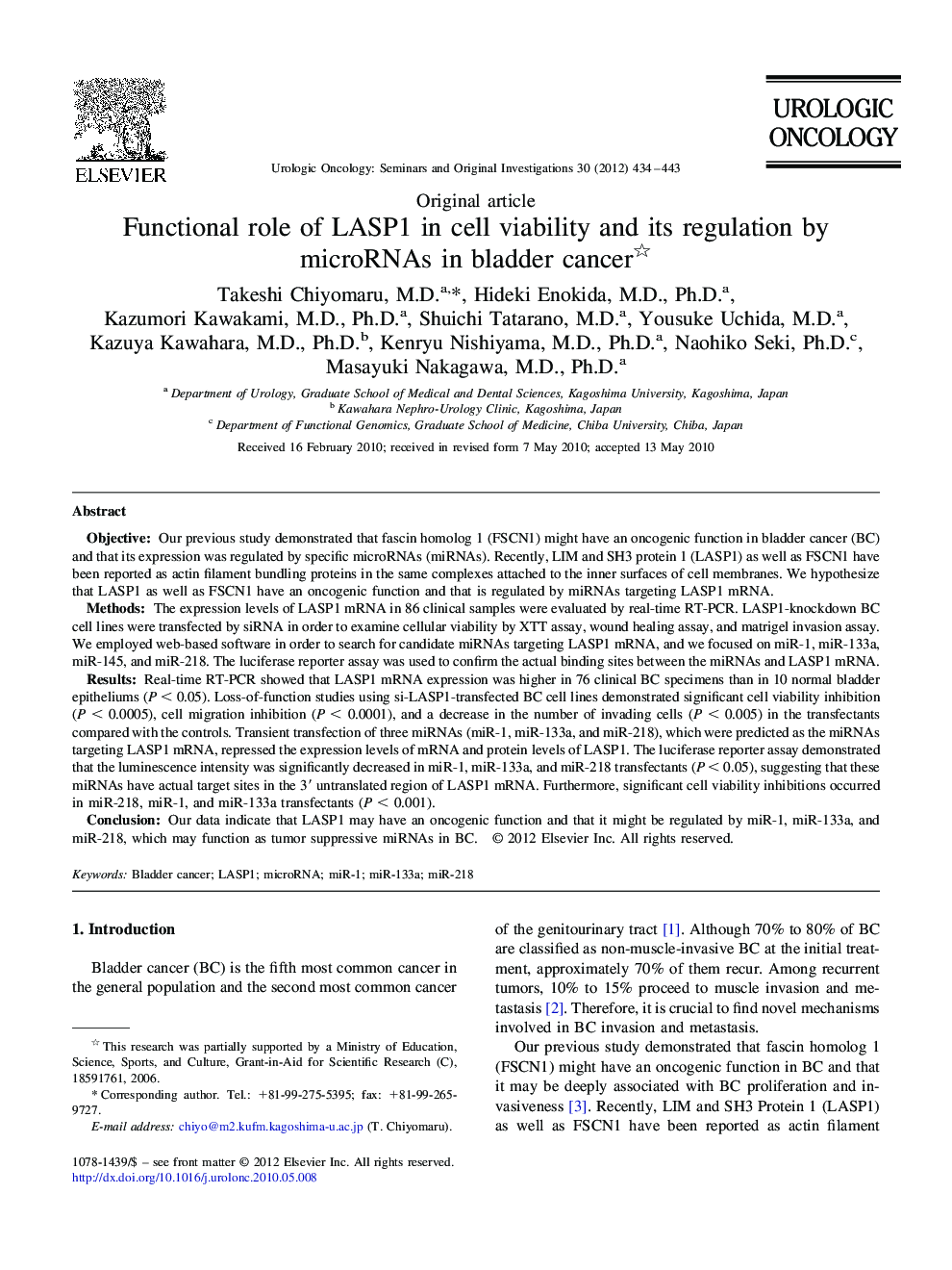| Article ID | Journal | Published Year | Pages | File Type |
|---|---|---|---|---|
| 4000428 | Urologic Oncology: Seminars and Original Investigations | 2012 | 10 Pages |
ObjectiveOur previous study demonstrated that fascin homolog 1 (FSCN1) might have an oncogenic function in bladder cancer (BC) and that its expression was regulated by specific microRNAs (miRNAs). Recently, LIM and SH3 protein 1 (LASP1) as well as FSCN1 have been reported as actin filament bundling proteins in the same complexes attached to the inner surfaces of cell membranes. We hypothesize that LASP1 as well as FSCN1 have an oncogenic function and that is regulated by miRNAs targeting LASP1 mRNA.MethodsThe expression levels of LASP1 mRNA in 86 clinical samples were evaluated by real-time RT-PCR. LASP1-knockdown BC cell lines were transfected by siRNA in order to examine cellular viability by XTT assay, wound healing assay, and matrigel invasion assay. We employed web-based software in order to search for candidate miRNAs targeting LASP1 mRNA, and we focused on miR-1, miR-133a, miR-145, and miR-218. The luciferase reporter assay was used to confirm the actual binding sites between the miRNAs and LASP1 mRNA.ResultsReal-time RT-PCR showed that LASP1 mRNA expression was higher in 76 clinical BC specimens than in 10 normal bladder epitheliums (P < 0.05). Loss-of-function studies using si-LASP1-transfected BC cell lines demonstrated significant cell viability inhibition (P < 0.0005), cell migration inhibition (P < 0.0001), and a decrease in the number of invading cells (P < 0.005) in the transfectants compared with the controls. Transient transfection of three miRNAs (miR-1, miR-133a, and miR-218), which were predicted as the miRNAs targeting LASP1 mRNA, repressed the expression levels of mRNA and protein levels of LASP1. The luciferase reporter assay demonstrated that the luminescence intensity was significantly decreased in miR-1, miR-133a, and miR-218 transfectants (P < 0.05), suggesting that these miRNAs have actual target sites in the 3′ untranslated region of LASP1 mRNA. Furthermore, significant cell viability inhibitions occurred in miR-218, miR-1, and miR-133a transfectants (P < 0.001).ConclusionOur data indicate that LASP1 may have an oncogenic function and that it might be regulated by miR-1, miR-133a, and miR-218, which may function as tumor suppressive miRNAs in BC.
